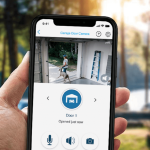Introduction to Garage Door Keypads
What is a Garage Door Keypad?
A garage door keypad is a device used for keyless entry into your garage. It requires the user to input a PIN code to operate the garage door opener. Typically, this keypad communicates wirelessly with the opener system. Garage door opener keypads are designed to enhance convenience and provide ease of use for homeowners. They are compact, easy to install, and compatible with most modern garage door opener systems.
Benefits of Using a Keyless Entry System
Keyless entry systems, like garage door keypads, offer many advantages:
- Enhanced security: Access is granted only to those with the correct PIN code.
- Improved convenience: No need to carry a remote or garage keys.
- Accessibility for families: Each member can use the same PIN to enter.
- No worry about losing remotes: Reduces risks compared to traditional methods.
- Quick operation: Entering the code takes seconds, saving time.
Installing a garage door opener keypad provides these benefits while boosting the overall security of your home.
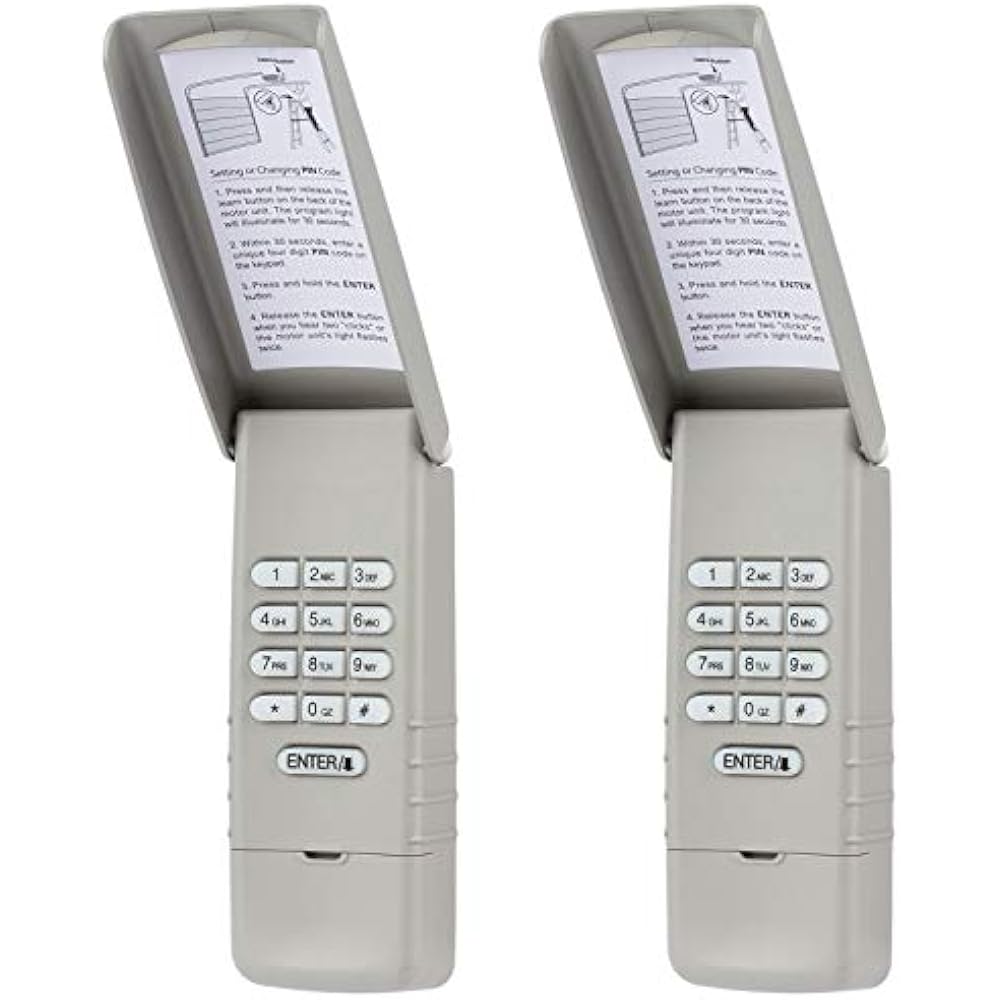 Types of Garage Door Keypads
Types of Garage Door Keypads
Garage door keypads come in different types, each offering unique features and benefits. Choosing the right type for your home depends on your needs and garage setup. Understanding these keypad options helps you make the best decision.
Wireless Keypads
Wireless keypads are a popular choice for modern homes. They communicate with the garage door opener using wireless technology. These keypads are easy to install since they don’t require wiring. Simply mount them near your garage door and connect to the opener. They offer flexibility in placement and are sleek in design.
Wireless keypads rely on batteries for power. Regular battery checks ensure proper operation. They are compatible with most garage opener systems. Families often prefer wireless models for their convenience and quick setup.
Wired Keypads
Wired keypads are another option for controlling garage door access. These connect directly to the garage opener using wires. Installation takes more time since wiring needs to be properly routed and secured. However, wired keypads don’t require batteries, which means no worry about power failure.
Wired keypads are known for reliable performance, making them perfect for long-term use. They are ideal for garages with existing wired setups. If your home already has compatible wiring, installation becomes simpler. Both wireless and wired keypads provide secure and easy access to your garage.
Preparing to Program Your Garage Door Keypad
Before programming your garage door opener keypad, ensure you are fully prepared. Proper preparation simplifies the process and avoids potential issues.
Necessary Tools and Materials
You’ll need a few items for programming the keypad. Get these ready beforehand:
- Garage door keypad: Ensure it’s compatible with your opener model.
- Owner’s manual: Refer to it for model-specific instructions.
- A ladder: Helps reach the garage door opener safely.
- Batteries: If your keypad is wireless, check for batteries.
- Writing materials: A notepad or sticky notes to record the code for future use.
Having these tools ready ensures a smooth process.
Locating the Learn/Program Button on the Opener
The first step in programming is finding the learn/program button on the opener. This button is crucial for pairing your keypad with the opener. Here’s how to locate it:
- Check your garage door opener: Look for the unit installed on the ceiling.
- Find the rear panel: Search for a small circular or square button.
- Look for labels: It’s often marked as “Learn,” “Program,” or “Set.”
- Inspect your user manual: The exact location depends on the model.
Press this button to enter programming mode. Be prepared to pair with your keypad as the system activates pairing for a limited time.
By identifying the tools you need and locating the learn/program button, you can easily get started with programming your garage door opener keypad.
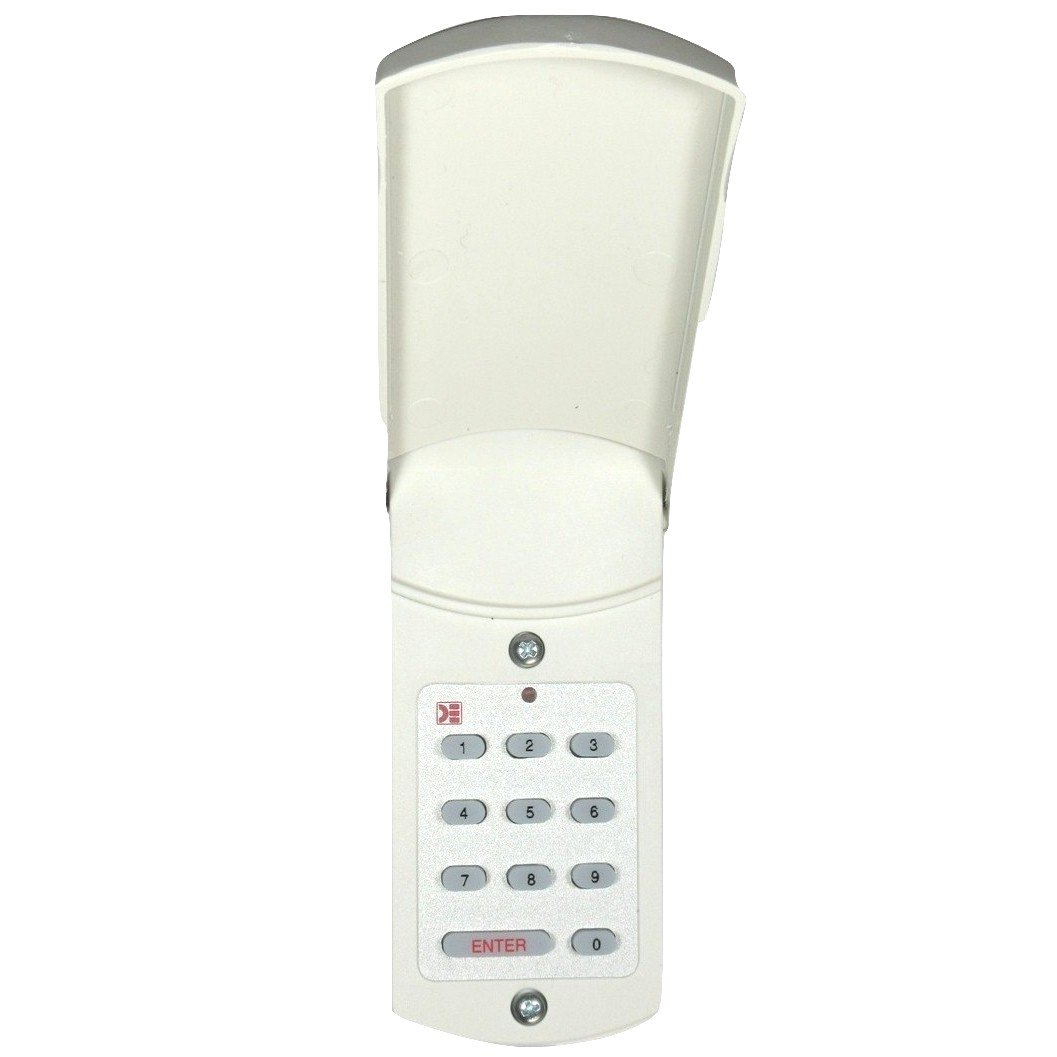 Step-by-Step Guide to Programming Your Keypad
Step-by-Step Guide to Programming Your Keypad
Programming your garage door opener keypad can seem challenging but is fairly simple with the right steps. Below, we break down the process into clear, easy-to-follow instructions.
Programming a Keypad Without a Remote
Programming without a remote is straightforward. Follow these steps:
- Locate the learn button on your opener: Find it on the back or side of the opener.
- Press the learn button: Press it until a light blinks, signaling it’s in programming mode.
- Input a new PIN: On the keypad, enter a 4-6 digit PIN of your choice.
- Confirm the code: Press the enter/confirm button on the keypad to save your new PIN.
- Test the keypad: Enter the PIN and check if the garage door operates properly.
Without a remote, the pairing depends on the learn button and keypad alone. Always check the manual for your specific model.
Programming a Keypad With a Remote
If you have a remote, programming the keypad becomes even easier. These are the steps:
- Press the learn button: On your garage door opener, activate programming mode.
- Hold the remote near the keypad: Keep it close for effective communication.
- Press and hold a button on the remote: Hold it until the keypad blinks or beeps.
- Input your PIN: Enter a 4-6 digit code on the keypad.
- Save the pairing: Press enter/confirm on the keypad to save the settings.
- Test the keypad: Use the PIN to verify if the door opens smoothly.
Using a remote simplifies communication between devices, making the process faster.
Resetting the Keypad Code for Security
For security purposes, you may need to reset your keypad PIN. Here’s how:
- Press the learn button: Hold it down until the opener’s light flashes (around 6-10 seconds).
- Clear the old code: This deletes all previous codes tied to the opener.
- Set a new PIN: Follow the programming steps to input a new code.
- Test the new PIN: Check if it operates the garage door correctly.
Resetting ensures garage access remains secure. Always use a unique code for improved safety.
Troubleshooting Common Keypad Programming Issues
Even with proper setup, garage door keypad issues can arise. These problems can often be resolved quickly. Below are common issues and ways to address them.
Keypad Doesn’t Respond or Light Up
If your garage door keypad doesn’t respond or light up, check these potential causes:
- Battery problems: Replace the batteries in your keypad. Dead batteries can prevent functionality.
- Power issues: For wired keypads, confirm the connection to the power source.
- Loose wiring: Secure any loose wires inside the keypad.
- Dirty keypad: Clean the keypad to ensure dirt or debris isn’t blocking the buttons.
- Faulty keypad: Test it using a working keypad or seek professional assistance if needed.
Resolving these problems can make your keypad responsive again.
Opener Does Not Recognize New Code
Sometimes, the opener won’t recognize the code entered into the keypad. Try the following steps:
- Verify code input: Re-enter the code carefully and ensure accuracy.
- Reprogram the keypad: Reset and follow the programming steps again.
- Check the learn button: Ensure the learn/program button on the opener is working.
- Consult the manual: Match the steps to your specific keypad model.
- Signal interference: Ensure nothing is blocking the wireless signal (for wireless keypads).
These actions should help establish a connection with the opener.
Interference or Range Issues
Wireless interference or range problems can affect keypad performance. Here are some tips:
- Position the keypad: Install it within the manufacturer-recommended range from the opener.
- Check for obstructions: Remove objects blocking the signal between the keypad and the opener.
- Test signal strength: Move closer to the garage door to test the connection.
- Avoid electronics interference: Keep the keypad away from other wireless devices.
- Replace batteries: Low batteries can weaken the wireless signal.
Addressing interference ensures seamless operation of your garage door opener keypad.
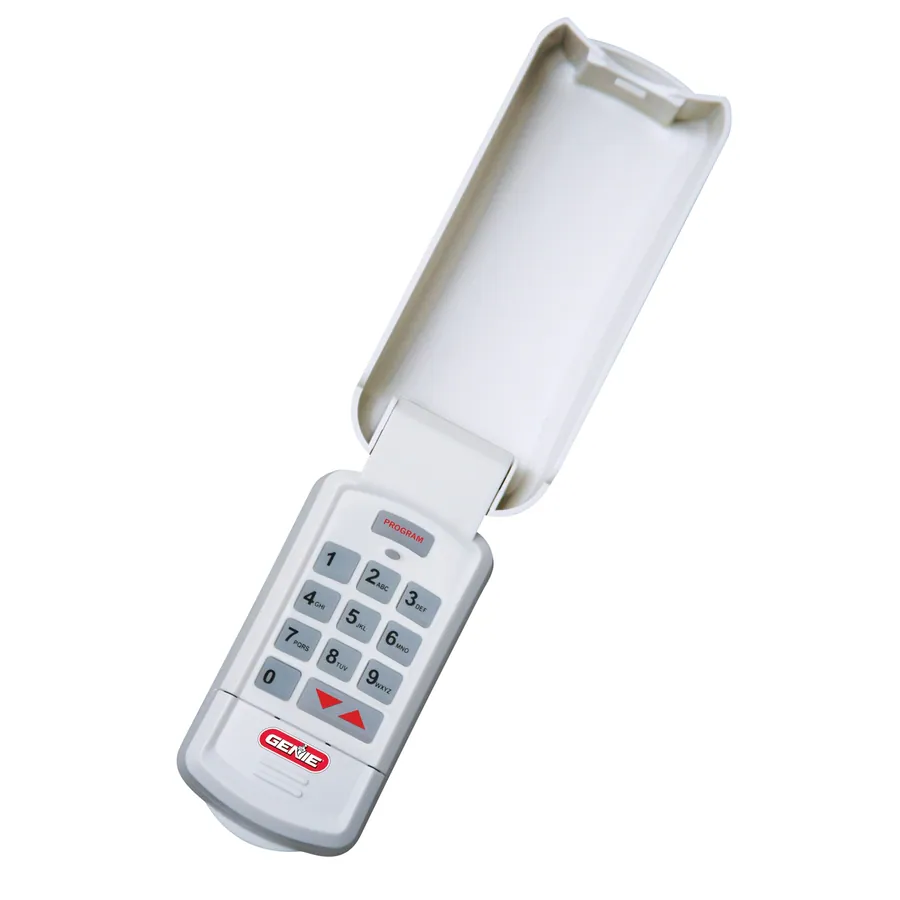 Maintaining and Replacing Your Garage Door Keypad
Maintaining and Replacing Your Garage Door Keypad
Proper maintenance ensures your garage door keypad works seamlessly over time. Regular checks and timely replacements improve performance. Below are practical tips to keep your keypad functional and identify when a replacement is necessary.
Cleaning and Battery Replacement Tips
Cleaning and replacing batteries are key steps to maintain your garage door keypad:
- Clean the keypad regularly: Wipe the surface with a soft, damp cloth to remove dirt and debris.
- Avoid harsh chemicals: Use mild cleaning solutions only to prevent keypad damage.
- Inspect for wear: Check buttons periodically for signs of fading or sticking.
- Replace batteries promptly: Swap batteries every 6-12 months or sooner if performance drops.
- Test functionality: After cleaning or replacing batteries, test to ensure the keypad operates properly.
Keeping the keypad clean and powered extends its lifespan and ensures smooth usage.
When to Replace a Keypad
Sometimes, replacing your garage door keypad is the best option. Watch for these signs:
- Button failure: If certain buttons stop responding, the keypad’s internal parts may be damaged.
- Frequent battery issues: Constantly replacing batteries might indicate deeper keypad malfunction.
- Signal problems: Persistent wireless interruptions can signal outdated technology in the keypad.
- Physical damage: Cracks or breaks on the keypad surface compromise its usability and security.
- Compatibility issues: Upgrade to a newer keypad if it doesn’t work with your garage opener system.
Replace the keypad if maintenance no longer improves its performance or safety.
Common Mistakes to Avoid
To ensure the longevity and effectiveness of your garage door opener keypad, avoid these common mistakes:
Using Simple or Common Codes
Using easily guessable codes compromises security. Steer clear of common sequences like “1234” or “0000,” and opt for more complex combinations to keep your garage door secure.
Neglecting Regular Maintenance
Failing to maintain your keypad can lead to performance issues or security vulnerabilities. Regularly clean the keypad, replace batteries as needed, and inspect for any signs of damage.
Improper Installation
Incorrect installation can affect the functionality and security of your keypad. Follow the manufacturer’s instructions carefully, and consider professional installation if you’re unsure about the process.
Ignoring User Guidelines
Each keypad model comes with specific guidelines for optimal use and maintenance. Ignoring these instructions can result in reduced performance or voided warranties. Always refer to the user manual for best practices.
Overlooking Integration Options
If your keypad offers smart home integration, don’t overlook this feature. Leveraging the full range of capabilities can enhance both security and convenience, providing a more comprehensive home automation experience.
Forgetting to Update Firmware
Firmware updates often include important security patches and performance improvements. Neglecting to update your keypad’s firmware can leave it vulnerable to security threats and limit its functionality.
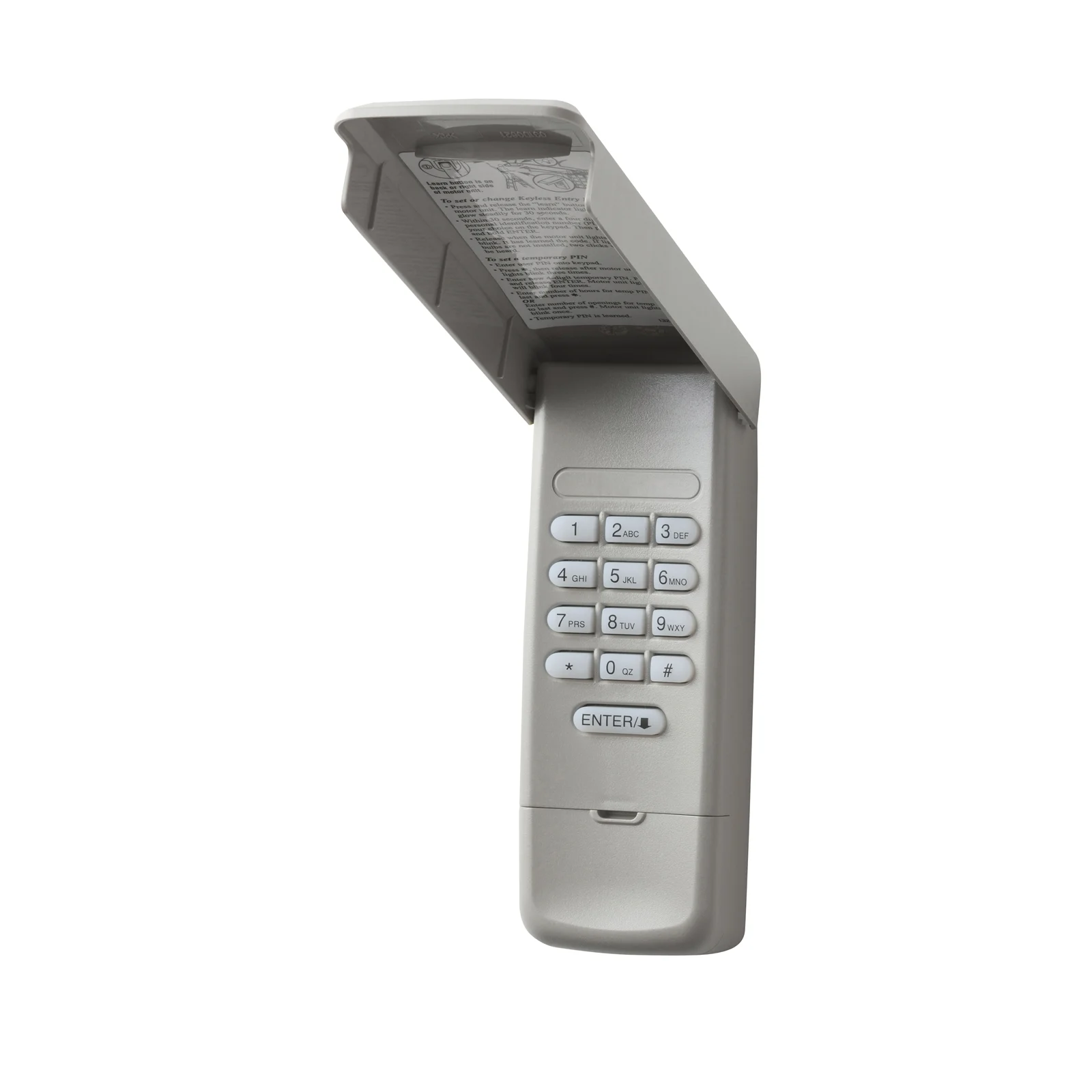 Future Trends
Future Trends
The future of garage door opener keypads is shaped by advancements in technology and evolving consumer needs. Here are some trends to watch for:
Increased Smart Home Integration
As smart homes become more prevalent, garage door opener keypads will continue to integrate seamlessly with other smart devices. Enhanced compatibility with voice assistants, security cameras, and home automation systems will provide users with greater control and convenience.
Enhanced Security Features
Future keypads will incorporate more advanced security measures, such as biometric authentication, two-factor authentication, and AI-driven threat detection. These enhancements will further protect against unauthorized access and improve overall security.
Improved Battery Life and Power Management
Advancements in battery technology will lead to longer-lasting and more efficient power sources for cordless keypads. Improved power management systems will extend battery life, reducing the need for frequent replacements and ensuring uninterrupted operation.
Touchscreen and Gesture Control
Innovative designs may include touchscreen interfaces or gesture control features, offering more intuitive and interactive ways to operate the keypad. These advancements will make accessing your garage door even more user-friendly.
Customizable and Personalized Settings
Future keypads will offer greater customization options, allowing users to personalize settings such as access codes, user permissions, and notification preferences. This personalization enhances both security and user experience.
Eco-Friendly Materials and Sustainable Designs
With increasing emphasis on sustainability, manufacturers will focus on using eco-friendly materials and sustainable production methods for garage door opener keypads. This shift aligns with global environmental goals and satisfies the growing demand for green products.
Enhanced Connectivity and Remote Monitoring
Advanced connectivity options will enable more robust remote monitoring and control features. Users will be able to track garage door activity in real-time, receive instant alerts, and manage access from anywhere in the world through their smartphones.
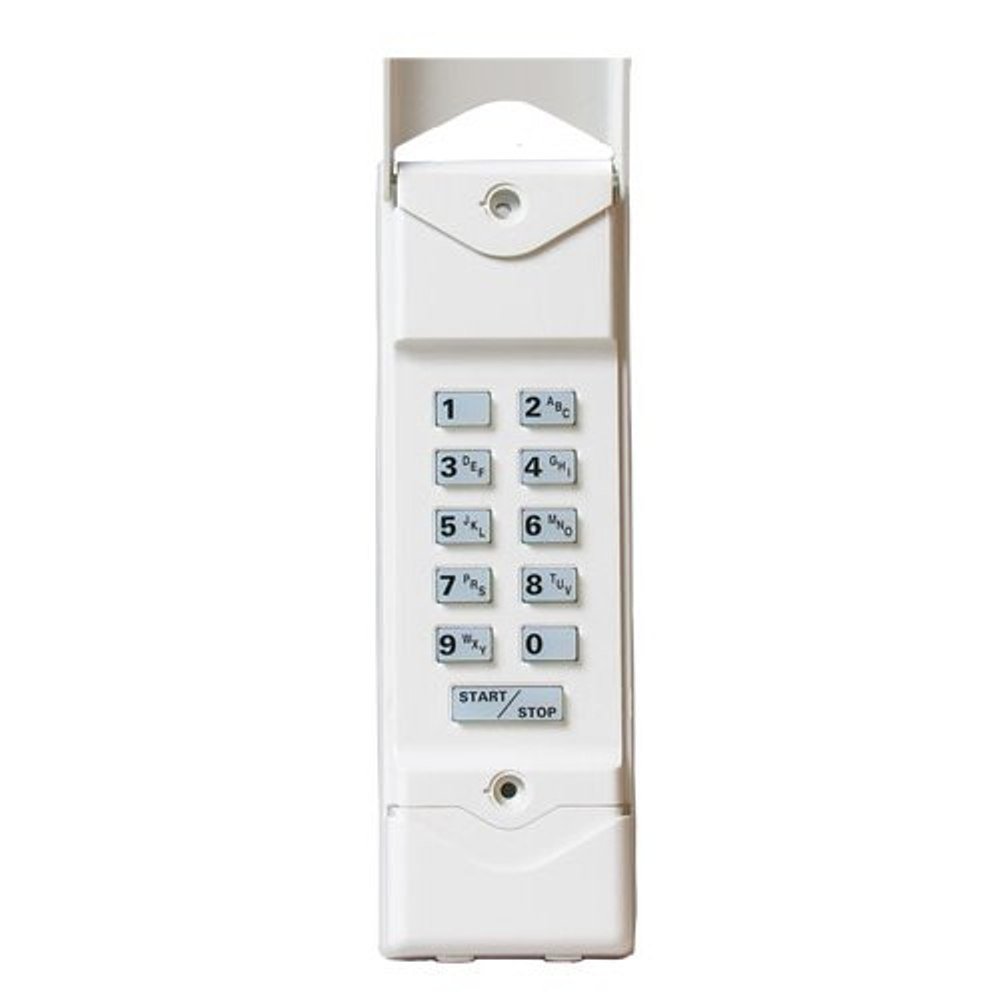 Conclusion
Conclusion
Tips for Secure and Convenient Use
To ensure secure and convenient use of your garage door opener keypad, follow these tips:
- Use unique PINs: Create codes that are hard to guess for better security.
- Share codes wisely: Provide access only to trusted family members or close friends.
- Change PINs regularly: Reset codes periodically to maintain a secure system.
- Inspect hardware often: Check for keypad damage or wear to avoid operational issues.
- Replace worn batteries promptly: Fresh batteries ensure consistent performance for wireless keypads.
- Monitor access: Stay informed about who uses the keypad and when.
- Follow manufacturer guidelines: Refer to the manual for proper setup and regular maintenance.
Final Thoughts on Enhancing Home Security
Garage door keypads bring convenience and security to homes. They offer a safe way to control access. Proper installation, coding, and maintenance can prevent unauthorized entry into your garage. Regular checks help eliminate potential keypad problems.
Investing in a keyless entry system is a smart move for modern homeowners. It simplifies access while boosting home security. With the tips shared in this guide, you can enhance the usability and safety of your garage door opener keypad. Always prioritize security to protect your home and loved ones.

